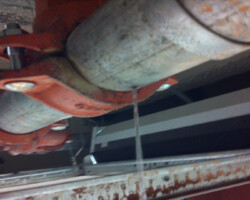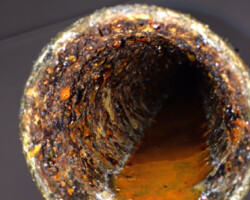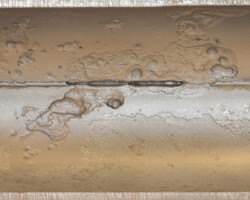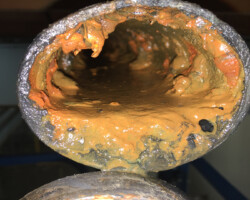How to Maximize the Lifespan of Your Fire Sprinkler System Installation and Maintenance
Fire Sprinkler Maintenance Services in Seattle: Keeping Your System Ready for Action
November 4, 2024The Importance of Fire Extinguisher Inspections and Maintenance
November 11, 2024Are you aware that a fire sprinkler system is only as effective as its lifespan allows? Imagine a scenario where a fire breaks out in your office building, but the sprinkler system fails to activate due to years of neglect. The consequences could be devastating. To ensure the longevity and reliability of your fire sprinkler system, there are several key steps you should take. By implementing regular maintenance and inspection, cleaning, testing, and monitoring, along with educating your employees on fire safety measures, you can maximize the lifespan of your fire sprinkler system and provide optimal protection for your property and those within it. But how exactly can you achieve this? Let’s explore further.
Regular Inspections and Maintenance
Regular inspections and regular maintenance and inspection are crucial for ensuring the optimal performance and longevity of a fire sprinkler system. When it comes to fire sprinkler installation, it is essential to follow the proper design and installation guidelines to ensure the system functions effectively. However, even with a well-designed system, regular inspections and regular maintenance and inspection are necessary to identify and address any potential issues.
During inspections, a professional technician will thoroughly examine the entire fire sprinkler system, including the pipes, valves, and sprinkler heads. They will check for any signs of damage, corrosion, or leaks that could affect the system’s performance. Additionally, they will verify that all components are in working order and meet the required standards.
Maintenance involves routine tasks such as cleaning components, testing the alarm systems, and lubricating moving parts. It also includes conducting flow tests to ensure the system is delivering the required amount of water to effectively suppress a fire.
Testing and Replacing Faulty Components
Regular testing helps identify any issues early on, allowing for prompt repairs or replacements. Here are some testing techniques to ensure the proper functioning of your fire sprinkler system:
- Flow testing: This involves measuring the water flow from the sprinkler system to ensure it meets the required standards. Flow testing should be conducted annually to verify the system’s effectiveness.
- Alarm testing: Testing the alarm system is crucial to ensure that it activates properly when there is a fire. This includes checking the sound and visual indicators to ensure they are in working order.
- Pressure testing: Pressure testing evaluates the pressure levels in the system to ensure they are within the recommended range. This test helps identify any leaks or pressure fluctuations that may affect the system’s performance.
- Component lifespan evaluation: It is essential to monitor the lifespan of various components of the fire sprinkler system, such as pipes, valves, and fittings. Regular inspections and replacements of worn-out or damaged components are necessary to maintain the system’s reliability.
Monitoring Water Pressure and Flow Rates
When monitoring the water pressure and flow rates of your fire sprinkler system, it is important to regularly assess these key performance indicators to ensure optimal functionality. Proper water pressure regular maintenance and inspection and flow rate optimization are crucial for the effectiveness of your fire sprinkler system in suppressing fires and protecting lives and property.
To maintain adequate water pressure, you should regularly check the pressure gauges installed in your system. These gauges provide real-time readings of the water pressure inside the pipes. If the pressure falls below the recommended levels, it may indicate a problem with the water supply or a potential blockage in the system. In such cases, it is essential to promptly address the issue by contacting a professional technician to diagnose and resolve the problem.
Flow rate optimization is equally important for the efficient operation of your fire sprinkler system. The flow rate refers to the volume of water discharged from the sprinkler heads per minute. To optimize flow rates, it is crucial to ensure that the pipes are free from any obstructions or debris that may impede water flow. Regular inspections and cleaning of the pipes can help prevent clogs and maintain consistent flow rates.
Monitoring water pressure and flow rates is a critical aspect of fire sprinkler system regular maintenance and inspection. By regularly assessing these indicators and taking prompt action when necessary, you can help maximize the lifespan of your system and ensure its reliability in the event of a fire.
Educating Employees on Fire Safety Measures
Educating employees on fire safety measures is essential for ensuring their awareness and preparedness in the event of a fire. By providing thorough training and clear guidelines, you can equip your employees with the knowledge and skills needed to respond effectively to fire emergencies. Here are four key areas to focus on when educating your employees:
- Fire extinguisher training: Teach your employees how to properly use fire extinguishers, including the different types of extinguishers and their appropriate applications. Ensure they understand the PASS technique (Pull the pin, Aim at the base of the fire, Squeeze the handle, Sweep from side to side) for effective extinguisher operation.
- Emergency evacuation procedures: Establish clear evacuation routes and make sure employees are familiar with them. Conduct regular drills to practice evacuation procedures and ensure everyone knows where to go and what to do in the event of a fire. Emphasize the importance of staying calm and following instructions during an evacuation.
- Fire safety protocols: Educate employees on general fire safety protocols, such as keeping exit routes clear, reporting fire hazards, and following smoking policies. Encourage them to be vigilant and proactive in identifying and addressing potential fire risks in the workplace.
- Communication and reporting: Stress the importance of promptly reporting any fire incidents or potential fire hazards to the appropriate personnel. Encourage open communication channels and establish a culture where employees feel comfortable speaking up about fire safety concerns.
Frequently Asked Questions
What Are the Common Signs That Indicate the Need for a Fire Sprinkler System Installation and Maintenance Inspection?
You don’t want to be caught in a fiery situation without a working sprinkler system. Regular inspections are key. Look for signs like rust, leaks, or blocked sprinkler heads to ensure your system is ready to protect. Your local fire marshal or authority having jurisdiction also has a minimum expectation for frequency of inspections allowed. When unsure, defer to NFPA 25.
How Often Should Faulty Components in the Fire Sprinkler System Installation and Maintenance Be Replaced?
To maximize the lifespan of your fire sprinkler system, it is important to follow regular maintenance and inspection guidelines. Faulty components should be replaced at the recommended replacement frequency to ensure the system’s effectiveness and safety.
What Are the Consequences of Not Monitoring Water Pressure and Flow Rates in a Fire Sprinkler System Installation and Maintenance?
Neglecting regular maintenance and inspection and failing to monitor water pressure and flow rates in your fire sprinkler system can have serious consequences. Regular inspections are crucial to ensure the system functions properly and is ready to protect your property in case of a fire.
Are There Any Specific Fire Safety Measures That Employees Should Be Educated On, Apart from the Proper Use of the Fire Sprinkler System Installation and Maintenance?
To maximize the lifespan of your fire sprinkler system, it is crucial to educate employees on various fire safety measures. Training should include proper use of the system and knowledge of evacuation procedures.














